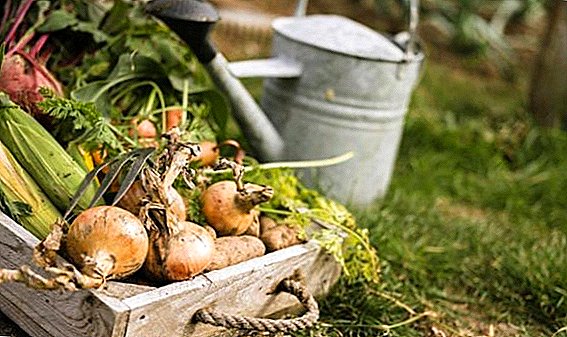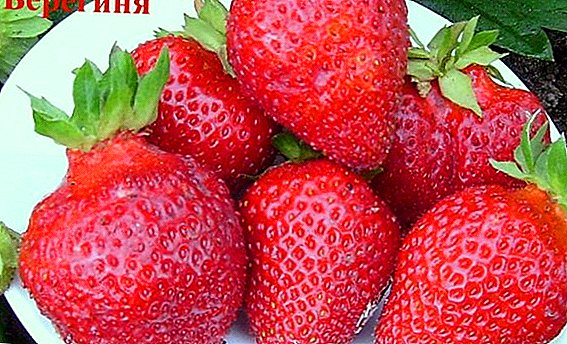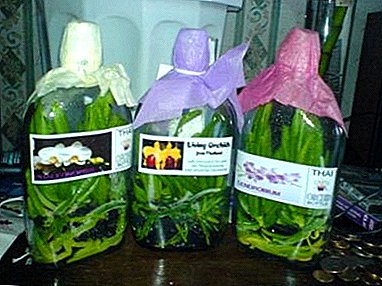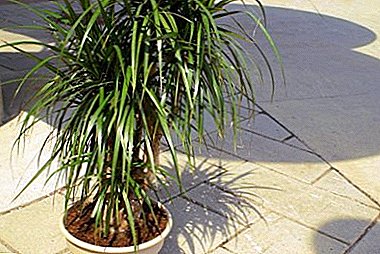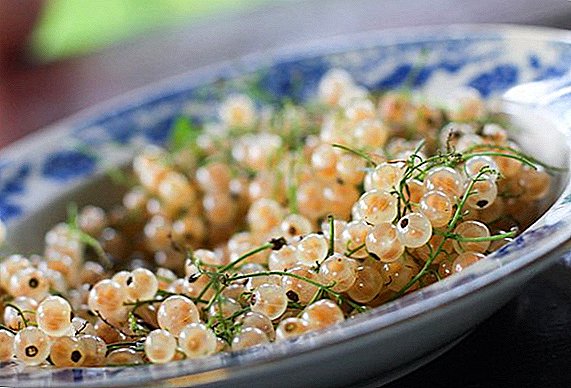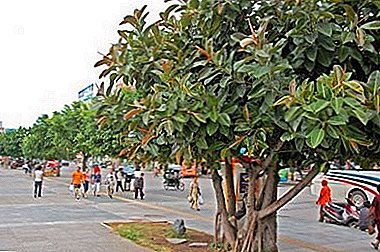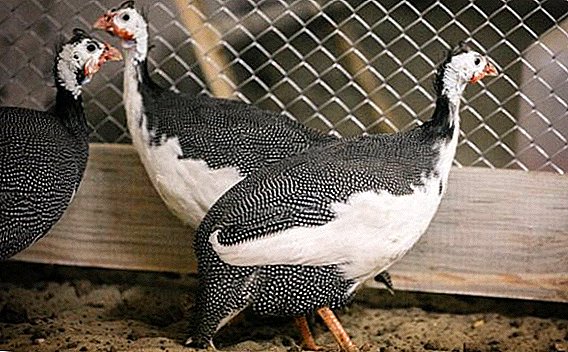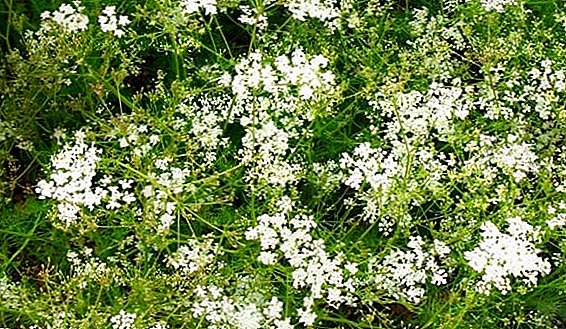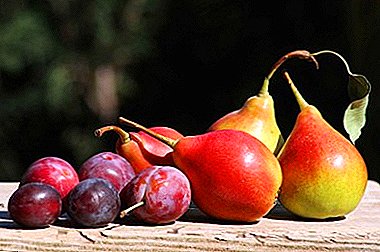
Pear variety Rossoshanskaya Beautiful endowed with high yields.
From one tree is collected from 70 to 80 kilograms of fruit.
Excellent resistance to disease and frost.
Planting varieties produced by cuttings or budding in the nursery.
What kind of pears refers?
 Pear Rossoshanskaya Beautiful refers to the late summer varieties. Universal in use.
Pear Rossoshanskaya Beautiful refers to the late summer varieties. Universal in use.
It is used in conservation, in cooking and fresh. Compotes made from the fruits of this variety are rated high - 4.5 points out of 5.
Sort has excellent transportability over long distances. Commercial quality of fruits is high. The appearance of pears was estimated at 4.6 points out of 5.0.
The chemical composition of pear grade Rossoshanskaya Beautiful:
| Composition | amount |
|---|---|
| Sahara | from 9 to 9.40% |
| Dry matter | from 12 to 12.4% |
| Titrated acids | from 0.15 to 0.17% |
| Pectic substances | from 0.3 to 0.4% |
| Vitamin C | 10 mg per 100 g. |
Summer varieties of pears also include: Duchess, Tonkovetka, Chizhovskaya, Rogneda and Lel.
Breeding history and breeding region
The pear tree is derived from the RZOSS - Rossoshansk organization engaged in research and development of agricultural crops.
Originators of a grade: G. D. Neporozhny (Follower M. M. Ulyanischeva on the development of the selection of pear trees) and A. M. Ulyanischeva (The author of the book "Tips flower growers").
Variety obtained through hybridization of varieties "Favorite Klapp" (unpretentious in cultivation variety with high taste) and "Thin thread" (frost-resistant grade). Year of breeding varieties 1952. State testing was carried out in 1965.
 The main distribution of the variety accounted for 1979-1992 of the last century. Grows in the Central Chernozem region, the Lower Volga and Altai regions, the Oryol, Bryansk regions and the North Caucasus.
The main distribution of the variety accounted for 1979-1992 of the last century. Grows in the Central Chernozem region, the Lower Volga and Altai regions, the Oryol, Bryansk regions and the North Caucasus.
Recently, a pear of this variety caught on in the southern part of Russia, Ukraine and Belarus.
In the Central Black Earth region, varieties such as Carmen, Otradnenskaya, Severyanka Krasnoshchekaya, Hera, and Favorite Yakovlev are fine.
Description varieties Rossoshanskaya beautiful
Consider separately the appearance of the tree and the fruit.
Tree
Trees strong growth, reach a height of more than 6 meters. In the early stage of growth have narrow pyramidal form, in the period of maturity - wide pyramidal. The productivity of the shoots is insufficient, so the density of the foliage of the tree is low.
Bark trunk silvery shade. Skeletal stems perpendicular to the ground, directed to the top. Have maroon-brown shade. The variety has a mixed yield - on spears, small rods, stem rings and at the ends of old last year's increments.
Shoots flat, elongated, have a maroon-brown shade. Kidney spiky and slightly elongated. Scales of brown shade. Leaves emerald, shining, small, rushing to the top of the tree.
Fetus
Pears medium size, in weight reach from 115 to 120 grams. The largest do not exceed 200 grams. They are endowed with the right classic shape with smooth edges.
 The surface of the fruit is smooth with a thin skin. The main shade of pears is snow-white amber, with subcutaneous emerald freckles. Cover shade burgundy, mild, takes 1/2 of the fruit.
The surface of the fruit is smooth with a thin skin. The main shade of pears is snow-white amber, with subcutaneous emerald freckles. Cover shade burgundy, mild, takes 1/2 of the fruit.
Peduncle elongated. At the base there is a small fruity fleshy influx. The saucer is miniature, borous. The cup has an open type.
Seeds small, long, brown shade. The flesh of the pears is delicate, of amber color with abundant juicing. It has a sweet taste with a slight sourness. Consumers taste was rated at 4.0 points out of 5.0.
Inflorescence This variety is an umbrella-shaped brush with countless flowers. Inflorescences consist of 8 or 9 flowers. The flowers are white, medium size, not exceeding 3 centimeters.
Have a cupped shape and a terry surface. Buds white-pink. Anthers and stigma pestles are on the same level. Petals with smooth edges, compressed, folded.
Specifications
Grade Rossoshanskaya Beautiful endowed high yield. From one tree is collected from 70 to 80 kilograms of fruit. From one hectare collect up to 250 centners of pears.
 During fourteen years of observation, a surprising yield was registered by gardeners. in 1000 quintals from one hectare. Harvesting accounts for the second decade of August.
During fourteen years of observation, a surprising yield was registered by gardeners. in 1000 quintals from one hectare. Harvesting accounts for the second decade of August.
Until full maturity pears are held on the stems firmly, without shedding. In a cool room fruit persist for 30 days. Fruiting comes on 6 or 7 year after planting cuttings or from budding in the nursery.
In the south of the Black Earth Central Region, the winter hardiness of this pear tree is very high. In severe winters at minus 34 degrees Celsius in 1976 and 1980. a weak freezing of the root system of 1.3 points was observed.
In the Oryol region and in the north of Voronezh, there was no severe freezing of the pear tree. During the spring frosts (minus 6 degrees Celsius) at the end of flowering of the tree in 1999 and 2000. 100% damaged flowers. During this period there was no harvest.
Therefore, at spring low temperatures, the tree needs careful care.
Damage does not depend on the temperature of frosts, but on their duration.
So that the flowers and ovaries of the pear tree of this variety are not damaged during the spring frosts, it is necessary to apply a highly effective method of delaying flowering.
The frost-resistant varieties also include: Bere Russkaya, the Wonderful, Fairy, Quiet Don and Fairy Tale.
A photo





Planting and care
Due to the fact that the weather is unpredictable and it is very difficult to predict frosts, in order to avoid freezing of ovaries and flowers, they use flowering delay method.
Autumn pristvolnuyu the surface of the earth for 10-15 centimeters mulch manure mixed in equal proportions with peat.
In January, the soil under such a layer of mulch begins to freeze. To freeze the earth did not go further, on the ground around the tree must be preserved snow cover.
35 centimeters of snow is well compacted and dried sawdust is laid out on top of 8-16 centimeters. The next layer after the sawdust will again be snow. It is also tamped down, after which the sawdust hardens.
 After the onset of spring on sawdust layer of the upper snow cover begins to melt. And the bottom layer of snow cover with sawdust and mulch remains unchanged.
After the onset of spring on sawdust layer of the upper snow cover begins to melt. And the bottom layer of snow cover with sawdust and mulch remains unchanged.
Mulch and part of the land should remain in a stable frozen form.
Despite the thaw, the pear tree will not respond to the alertness of the color buds. Flowering is delayed until stable warm weather.
Depending on the onset of spring steady weather, around May 7-13, sawdust is removed from the ground around the tree. The bottom layer of snow begins to melt quickly.
Two days after the complete disappearance of snow, the tree begins to gradually come to life. With this procedure, the development of the tree is late for 10-14 days.
This is the only sure way to save flowers and ovaries from unwanted spring frosts while maintaining a full stable yield.
Planting varieties produced by cuttings or budding in the nursery. Pear variety Rossoshanskaya Beautiful loves well-fertilized black soil. Prefers drained soil.
The variety is responsive to fertilizer. Does not like hot sun rays. Drought tolerance of this variety refers to the average mark. With inadequate soil moistening, fruits are shallowing.
Does not like abundant watering. Therefore, watering such a tree is not often, only when the soil dries. When watering must be used water at room temperature to avoid cooling the root system.
At an early stage of growth, pruning is not required, as the tree has a narrow pyramidal shape. During the maturity period, standard pruning is required. wide crown.
Diseases and pests
 Sort excellent disease resistance. On south of Voronezh, lesions //selo.guru/ptitsa/bolezni-p/gribkovye/parsha.html was not observed. In the Oryol region there were minor lesions.equal to the average degree.
Sort excellent disease resistance. On south of Voronezh, lesions //selo.guru/ptitsa/bolezni-p/gribkovye/parsha.html was not observed. In the Oryol region there were minor lesions.equal to the average degree.
Disease septoria observed only in epiphytotic years. The variety does not require mandatory preventive treatments. Pest damage is little.
Conclusion. Rossoshanskaya Beautiful pear variety has universal use. It is used in conservation, in cooking and fresh. Pears of medium size, in weight reach from 115 to 120 grams.
They are endowed with the correct classical form with even elongated edges. The variety is partially self-fertile, endowed with high yields. From one hectare collect up to 250 centners of pears.
Good yields are also demonstrated by the varieties Autumn Yakovleva, Krasulya, Lada, Lyubimitsa Yakovleva, Nursery and Decakrinka.
Watch the video in which you will see the fruit of the Rossoshanskaya Pear beautiful.


